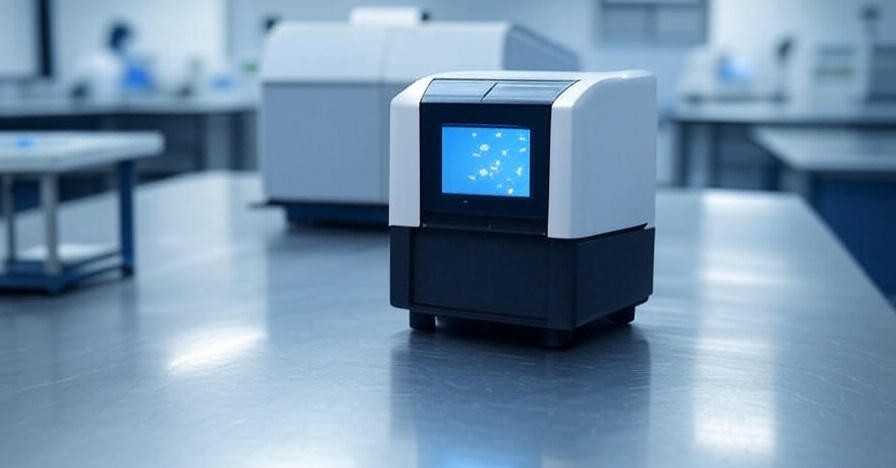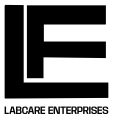
What is Microtome?
- The microtome is an instrument that is used to cut ultra-thin slices of tissue or any material.
- These slices are just a few micrometers in size and are prepared for viewing under a microscope.
- Its name also comes from Greek – micros means small and thin means cutting.
- Understand that microtome is a super accurate slicer – like a daily slicer, but this is not ours, it is used to cut thin pieces of tissue.
- It is used a lot in fields like histology, pathology, botany.
How Does Microtome Work?
- In microtome, sample is fixed in one place, like by embedding it in wax.
- Then it is slowly moved towards a sharp blade. (Transition word: then)
- Blade comes out cutting thin slices.
- This section is then stained and viewed under a microscope.
- (Transition word: then)
- The main parts are:
- Sample holder: Keeps the sample tight.
- Blade: Super-sharp blade made of steel, diamond or glass.
- Advancement mechanism: Advances the sample one micrometer forward.
- Base & frame: Keeps the entire instrument stable.
- Nowadays, digital and auto-mode microtomes are also available which work quite easily and accurately.
- (Transition word: nowadays)
Types of Microtome
- Rotary MT
- This is the most commonly used microtome.
- The handwheel rotates to cut the sample with the blade.
- Best for paraffin-embedded tissues.
- Benefit: Accurate and easy to use.
- Disadvantage: Blade needs to be kept sharp.
- Cryostat MT
- It is like a freezer – cold up to -20°C.
- Used to cut frozen tissue, mostly for fast diagnosis during surgery.
- Benefit: Gives quick results.
- Disadvantage: A warm and cold environment is required.
- Ultramicrotome
- Cuts nanometer-level slices for electron microscope.
- Diamond or glass knife is used.
- Benefit: Gives super-thin slices.
- Disadvantage: Challenging and costly.
- Vibrating MT
- Used to cut soft and delicate tissue (such as brain tissue).
- Blade cuts with vibration.
- Benefit: Does not damage soft tissues.
- Disadvantage: Slow.
- Sledge MT
- For hard samples like bone or wood.
- Sample moves on a track like a blade.
- Benefit: Perfect for hard material.
- Disadvantage: Rarely used in routine labs.
Where is MT Used?
- Medical Pathology: Used to diagnose tissue for cancer and other diseases.
- Botany: Used to study plant tissue.
- Neuroscience: Used to look at the structure of the brain.
- Material Science: Used to check the structure inside plastics, polymers or metals.
- Forensic Science: Used to cut hair or tissue samples for forensic analysis.
Why is MT Necessary?
- Early Diagnosis: Ultra-thin slices are necessary to catch the disease on time.
- Base of Research: The microtome is the foundation of every detailed study.
- Industrial QC: It helps in testing the quality of the product.
Tips for Good Use
- Choose the Right Blade: Use the blade according to the type of sample.
- If the blade becomes blunt, it must be changed.
- Prepare the sample correctly: Embed it properly in wax or resin.
- Adjust the Slice Thickness: First make a thick cut, then slowly make it thin.
- Maintenance of the machine: Keep cleaning and lubricating it.
- Take care of safety: Always be safe while handling the blade.
There are Challenges Too
- Training is required: Not everyone can handle it, especially electron microscopy.
- Price is high: Cryostat and ultramicrotome are quite expensive.
- Maintenance is necessary: Regular servicing of blade and moving parts is required.
- Delicate Samples: Some samples are difficult to cut, like brittle tissues.
What is the Scenario in the Future?
- With technology, microtome is also getting smarter.
- Features like auto mode, digital control, and real-time imaging are coming.
- Integration of AI and 3D imaging is also happening, so microtome is going to become more powerful in future.
- Finally, microtome is a small instrument, but its work is very powerful.
- (Transition word: finally)
- Whether you want to diagnose a disease or discover a new secret of science – it is difficult without a microtome.
Frequently ask questions (FAQ)
Q1: What is the difference between Microtome and Cryostat?
Microtome is a normal cutting tool, while cryostat is a special microtome that cuts frozen tissue – mainly during surgeries.
Q2: Does a microtome cut anything other than biological materials?
Yes, a sledge microtome can cut non-biological materials such as wood, polymers, or metal.
Q3: How thin is the cut?
A rotary microtome can cut up to 1 micrometer, while an ultramicrotome can cut up to 50 nanometers.
Q4: Is it difficult to operate?
Some training is required, especially for high-end microtomes. But a rotary microtome is easy for routine use.
Disclaimer
- This blog is only for knowledge.
- Consult an expert for professional advice.
- We are not responsible for any mistake, mistake or any other problem.




